Spanish Civil War: cavalry and tanks
M. Koltsov. Spanish diary
Behind the pages of the civil wars. The rugged terrain characteristic of Spain was convenient for cavalry, since both tanks and aircraft were still not powerful enough to radically change the course of battles.
Until 1936, the Spanish army had one cavalry division, consisting of three brigades. The brigade consisted of two regiments, supported by a battalion of motorcyclists, a company of armored vehicles and a battalion of horse artillery from three batteries of 75-mm guns. The division additionally consisted of four more separate cavalry regiments and another machine-gun squadron. But the particularly exotic units of the Spanish army were the five tabors, units of the Moroccan cavalry, somewhat smaller in number than the battalion. The camp usually consisted of three squadrons of Moroccan cavalry and another Spanish machine-gun squadron.
True, to say that the Spanish horseman was a good representative of his military profession, in general, can only be a stretch. It was an infantryman with a horse and a saber, somehow trained in fencing. The Spanish cavalry squadron was considered the equivalent of an infantry company, but in terms of its firepower it reached only an infantry platoon, and all because the cavalry were armed only with rifles and three pitiful light machine guns. That is why the regiment also included a purely machine-gun squadron and, in addition, a squadron equipped with 40- and 60-mm mortars. Well, then anti-tank and even anti-aircraft guns were added there.
With the beginning of the mutiny, a significant part of the seven cavalry regiments in the army went over to Franco's side, then one Civil Guard squadron and, of course, all the Moroccan cavalry and several squadrons of the volunteer “Phalanx of Spain” initially devoted to the rebels. The Republicans were supported by three cavalry regiments, then eight squadrons of the Civil Guard, two squadrons of the Guard de Asalto and all the personnel of the training camps, where the cavalrymen were trained.
Cavalry tactics consisted of supporting infantry brigades in difficult terrain and raiding enemy territory. The cavalry, together with armored vehicles, was also used for reconnaissance and guarding transport convoys. The front line between the Republicans and the Nationalists was stretched over 2,5 miles, so it was also very easy for the cavalry to penetrate through it into the rear of the enemy and commit various "outrages" there.
However, in the field, the Spanish cavalry, both from one side and the other, most often acted, being dismounted. They usually acted in platoon or in groups, and the group usually consisted of three or four horsemen. Two groups made up a squad on flat and open open terrain, the squad along the front could be stretched to a distance of 45 meters, that is, about five meters between individual riders. Fire support was provided by squadrons armed with Browning light machine guns. "Light armor" (tankettes with machine guns and flamethrowers) were used to suppress enemy firing points.
And here is how one of the internationalists Raymond Sender from the 5th Infantry Regiment, operating in 1937 near Madrid, described the attack of the Moroccan camp.
The cavalry of the nationalists also acted quite effectively in other places. So, on February 6, 1938, near the town of Alfambra, two brigades of nationalist horsemen from the division of General Monasterio in two ranks and a total of 2000 sabers attacked the positions of the Republican division. The third brigade, along with the Italian CV 3/35 tankettes as support forces, moved behind them in reserve. As a result, the attacked Republican division was completely defeated, lost all artillery, all machine guns and even its field kitchens.
But the usual attack pattern was different from this one. The cavalry moved along with the tanks, very often parallel to the road along which they were walking, so as not to spoil the tracks on the stony Spanish soil. When the forward detachment entered into battle with the enemy, the remaining horsemen immediately dismounted and created a front, behind which batteries of 65-mm guns were deployed. Tanks left the road on the ground and struck from the front, while several cavalry detachments attacked the enemy from the flanks, trying to go to his rear. Having thus blocked the enemy's position, the cavalrymen allowed the rest of the infantry to complete the operation, while they themselves moved on.
It is worth noting that it was the nationalists who fought in this way. The Republicans, although they were brought up on the best traditions of our own civil war and saw Chapaev's dashing cavalry attacks in the cinema, acted in this way so rarely that none of the sources recorded it! And this happened in conditions when there was no talk of refusing the priority of cavalry as the main striking force of the ground forces, it was not disputed by anyone, since traditional stereotypes were very strong. In the same United States, tank units were called armored cavalry until the very beginning of World War II. In the Red Army, tankers were constantly preparing for action together with the cavalry, which was not even hidden, but on the contrary, was demonstrated in maneuvers! And yet, in Spain, only the Francoists used all this positive experience. Did our military advisers keep their combat experience a secret? No, this is simply impossible. Perhaps something else: nobody listened to them there! For example, here is a telegram received from the Aragonese front to the Minister of War of Spain regarding our military specialists: "A large number of Russian officers in Aragon puts Spanish soldiers in the position of colonized aborigines." That's it, word for word!
But what about the tanks of Spain itself? Didn't they exist at all? After all, Spain built battleships, even small ones, and a tank is much simpler than any battleship! Well, armored vehicles appeared in Spain back in 1914 (and some samples of armored vehicles were tested back in 1909), when 24 Schneider-Creusot armored cars were purchased in France, large-sized vehicles on the chassis of Paris buses with armor thickness of only 5 mm. 40 hp engine was frankly weak, rear-wheel drive only. Tires are traditionally made of molded rubber. In short, nothing outstanding. True, here the roof was with an A-shaped slope of the armor plates, so that enemy grenades would roll off it.
A car on a good road could move at speeds up to 35 km / h. Its speed, as well as the cruising range of 75 km, were low. For some reason, there was no permanent armament, but it had six large embrasure hatches on each side, which served for ventilation of the vehicle, and machine guns and arrows could fire through them. The last were 10 people. During the hostilities on the territory of Spanish Morocco, these machines showed themselves well, and they were also used in the civil war!
The first Spanish tanks were the CAI Schneider, which arrived in Spain after the end of the First World War from France, and then the famous Renault FT-17, both with machine-gun and cannon armament, in cast and riveted turrets. Control tanks FT-17TSF, with radio stations in the wheelhouse, were also supplied. In a word, it was all French technology, and quite modern, except for the poor "Schneider". However, they also found a place for themselves in the civil war ...
Interestingly, in the 20s, again in France, the Spaniards bought the experimental wheeled-tracked tanks "Saint-Chamon", which they liked, and then wheeled-tracked armored vehicles with rubber-metal tracks "Citroen-Kerpecc-Schneider" R-16 mod. 1929, experienced British Carden-Loyd tankettes, and Italian Fiat 3000 tanks.
But it was only in 1928 that Spain managed to build its own so, work on which had been started two years earlier at the state-owned Trubia plant. The work was supervised by Captain Ruiz de Toledo, and the name of the tank was given the following: "high-speed infantry tank", or "Model Trubia", series "A".
We decided to release it, like Renault, in machine-gun and cannon versions, and even put our own 40-mm cannon with a firing range of 2060 m and an initial projectile velocity of 294 m / s.
But for some reason, the Spaniards did not succeed in the cannon version, and the tank was armed with three French Hotchkiss infantry machine guns at once with a 7-mm Mauser cartridge. Outwardly, this tank was a bit like Renault, but it also had many "national" differences. For example, it is not clear why a two-tier tower was put on it. Moreover, each tier rotated independently of the other, and in each tier a machine gun was installed - each in a ball mount, which made it possible to change the firing sector of each of them without turning the tower itself. Another machine gun was placed next to the driver in a ledge on the front armor plate. On the roof of the tower, in addition to all its innovations, a stroboscope was also installed. Recall that this device consisted of two cylinders, one inside the other, while the inner cylinder was stationary, but the outer one, driven by an electric motor, rotated at high speed. The outer cylinder had a lot of vertical slots on the surface, so narrow that rifle-caliber bullets could not penetrate through them, but on the surface of the inner cylinder there were viewing windows, covered with bullet-proof glass. When the outer cylinder rotated rapidly, the stroboscopic effect began to operate, the armor of the cylinders seemed to "melt", which made it possible, having thrust the head into a motionless cylinder, to conduct observation from it. At the same time, a 360 ° view was provided, but the stroboscope required a special drive, it often failed, needed good illumination and, as a result, did not take root on the tanks. Above the stroboscope was covered by an armored cap, which also served as a fan. In addition to the third machine gun, in the hull on the sides of the tank there were two ball mounts for firing from a personal weapons.
It is interesting that the designers made the bow of the hull protruding beyond the rim of the caterpillar, and so that it does not rest against anything, they put a narrow roller on it to overcome vertical obstacles. A traditional "tail" was also envisaged, as it was supposed to help to cross the trenches. Unlike Renault, Trubia had the entire chassis reserved. Moreover, it is also closed from above by fenders with bevels. The caterpillar was designed in a very original way. The tracks with their inner surfaces slid along the guide runners inside the reserved track contour, while every second track had a special protrusion covering the same armor outside!
This design of the tracks allowed them to be reliably sheltered from bullets and shell fragments, from dirt and stones, but due to the lack of suspension, it was not very reliable. And the absence of lugs on the tracks greatly reduced the permeability.
In battles, for example, during the defense of Oviedo and at Extremadura, the use of these tanks showed that their machine-gun armament was quite sufficient, although it was inconvenient to use them. But there were very few of them *
On the basis of the Landes artillery tractor, which had a similar chassis with the Trubia, they tried to make an infantry battle tank - Trubia mod. 1936, or (by the name of the funding organization) Trubia-Naval, but the Republicans called it the Euskadi machine.
The tank came out just tiny and very light, but, nevertheless, with a crew of three, and for its size and weight it had solid armament, armed with two 7,7 mm Lewis infantry machine guns - one in the tower and one in the hull , both in ball installations. At first there was an idea to equip it with a 47-mm gun in the turret and a machine gun in the hull, but nothing came of it. The tank was used in battles and quite widely. It also fell into the hands of the rebels, but, as in the case of the Trubia, it was released in a minimal amount.
The "Tank Designers Group" in the city of Bardastro in the province of Huesca designed and built the "Bardastro tank". The caterpillars on it were reserved, on the hull there was a cylindrical machine-gun tower. No other information could be found about him.
When in 1937 the command of the nationalists instructed the specialists of the Trubia plant to create an infantry tank superior to both Soviet and Italian-German tanks, those such a tank called CCI "Type 1937" - "infantry battle tank", were able to make and received an order for 30 cars. However, what did they do in the end?
The chassis was borrowed from the Italian CV 3/35 wedge. Armament, coaxial machine guns "Hotchkiss", were to the right of the driver, and the 20-mm automatic cannon "Brad" mod. 35-20 / 65 - in the tower. The tank had a speed of 36 km / h and a diesel engine. To support the infantry, this was better than the ersatz tanks of the Pz.IA and B, but still, the Spanish engineers did not succeed in surpassing the Soviet T-26s.
The next tank, which existed, however, only at the prototype level, was named the "Verdekha infantry tank". Moreover, it was named so in honor of its designer, artillery captain of the nationalist army Felix Verdeh. The development of the machine began in October 1938, and in the spring of 1939 its tests began. This time, the chassis was borrowed from the T-26 tank, but the engine and transmission were installed in the front. The armament consisted of a Soviet 45-mm cannon and a German machine gun "Dreise" MG-13 and was located in the turret located in the rear of the hull. Moreover, the tower was similar to the Pz.I tower, but with a larger armored mask, in which the gun trunnions were fixed. There is a photo where this tank has a cylindrical tower with double doors on both sides. The tank came out about a quarter lower than the Soviet T-26. The turret armor was 16 mm thick, and the frontal hull armor plate was 30 mm thick. There is a photograph in which machine guns are on both sides of the gun barrel, that is, different options for installing weapons were tested on the tank.
The tank "Verdekha" was shown to General Franco, but since the war had already ended, there was no point in releasing it, as well as the SPG at its base.
Tanks "Vickers-6t" in Spain also fought. They were sold to the Republicans in 1937 by the President of Paraguay. These were three tanks of type "A" (machine-gun) and one type "B" - cannon, captured during the war between Paraguay and Bolivia.
The Spaniards also had their own armored car "Bilbao", named after the city in the north of the country where it was produced. He entered service with the carabinieri corps in 1932 and fought in the armies of both republicans and nationalists. 48 of these armored cars were manufactured on the chassis of a Ford 8 mod. 1930, the production of which was established in Barcelona. Armament: one machine gun "Hotchkiss" caliber 8 mm and personal weapons of the shooters, which were located in it quite a lot. By the way, one "Bilbao" "survived" to this day.
But the armored car UNL-35 or "Union Naval de Levante T-35", named after the plant where it was produced since January 1937, owed its appearance to Soviet engineers Nikolai Alimov and Alexander Vorobyov. They took the chassis of commercial trucks "Chevrolet-1937" and the domestic ZIS-5 and booked them, and also installed weapons: two 7,62-mm machine guns. The nationalists, who also got them as trophies, installed two MG-13s. These vehicles fought on all fronts, earned high marks and ... were in service with the Spanish army even until 1956.
On some of these armored vehicles, instead of a machine gun, 37-mm Puteaux cannons were placed in the turret, which were removed from the damaged Renault FT-17 tanks. These BAs fought in Catalonia, but after the defeat of the Republic they fell into the hands of the nationalists. And they put towers on them ... from the destroyed Soviet armored vehicles BA-6 and tanks T-26 and BT-5! So these BAs began to look very much like the Soviet BA-6s, and only close they could be distinguished visually. Two ACC-1937 from Catalonia ended up on the territory of France along with the Republicans who had gone there. In 1940 they were captured by the Germans, named "Jaguar" and "Leopard" and sent to fight on the Eastern Front! The Leopard had a 37mm cannon in its turret, but then it was removed and replaced with a machine gun behind its shield. Both of these armored vehicles were used to fight the partisans, and there is information that they were even captured by the Red Army!
* For example, the Spanish historian Christian Abada Tretera reports that in July 1936 there were only 17 FT-10 tanks - five in a tank regiment in Madrid (Regimiento de Carros de Combate No. 1) and five in Zaragoza (Regimiento de Carros de Combate # 2). There were also four old Schneider tanks in Madrid. Three prototypes of the Trubia tank had the Milan infantry regiment in Oviedo. Two Landes cars - at the Trubia plant in Asturias. There were only 48 armored cars "Bilbao", however, the Republicans had 41 cars.
Note: all drawings of armored vehicles were made by artist A. Sheps.
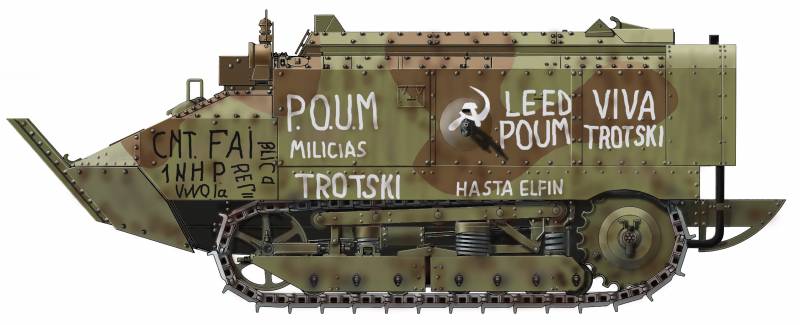
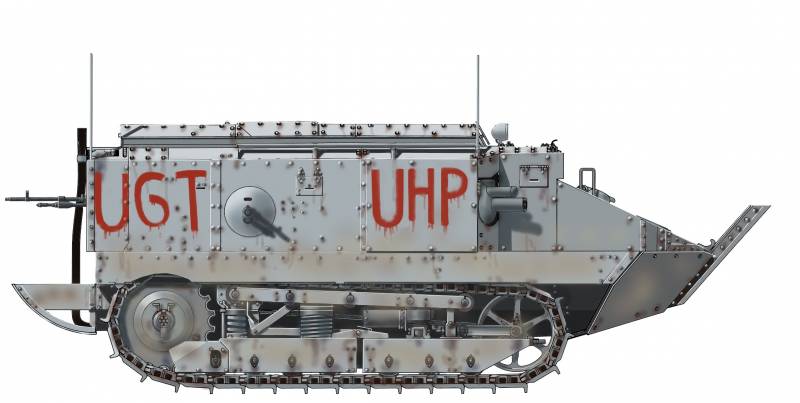
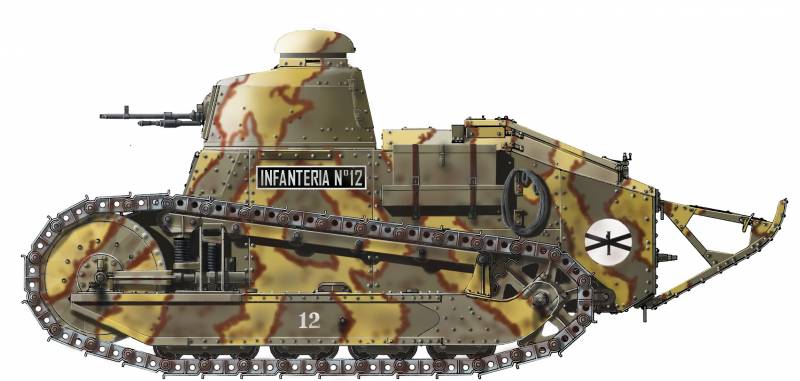
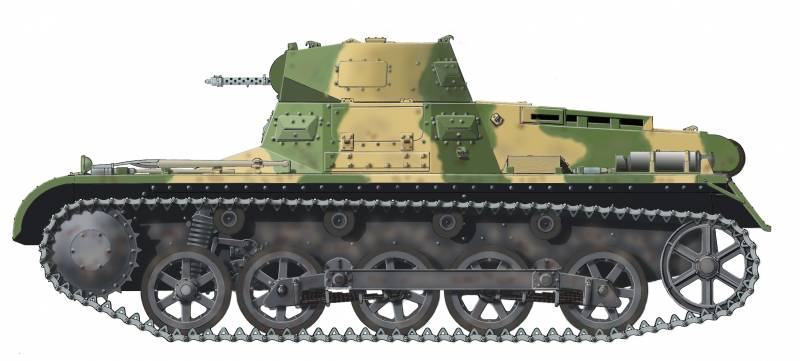
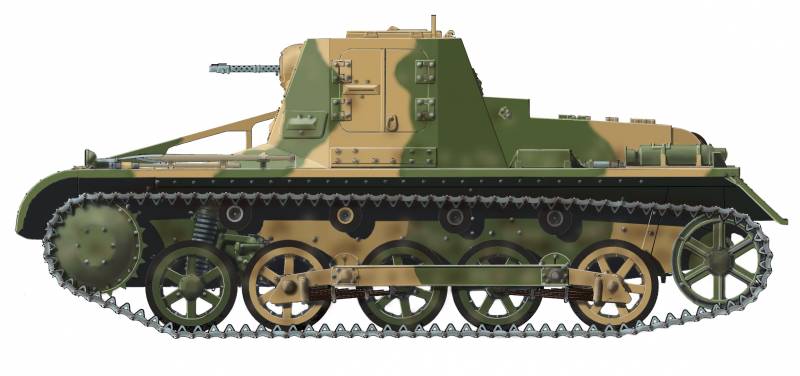
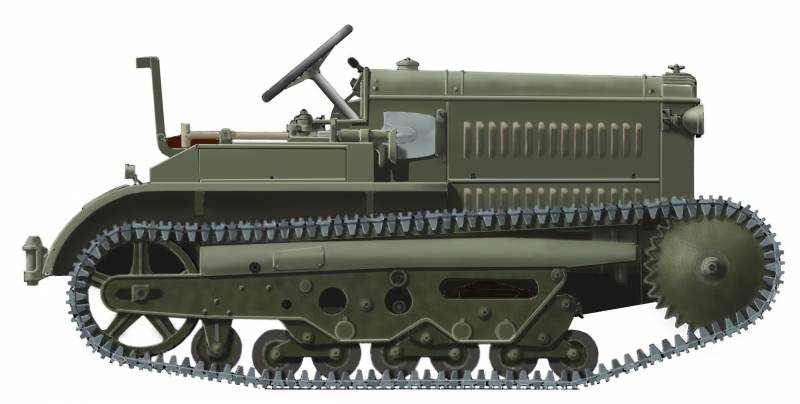
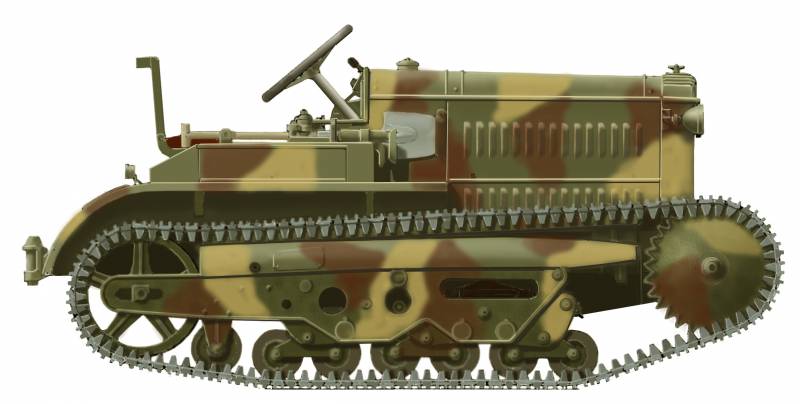

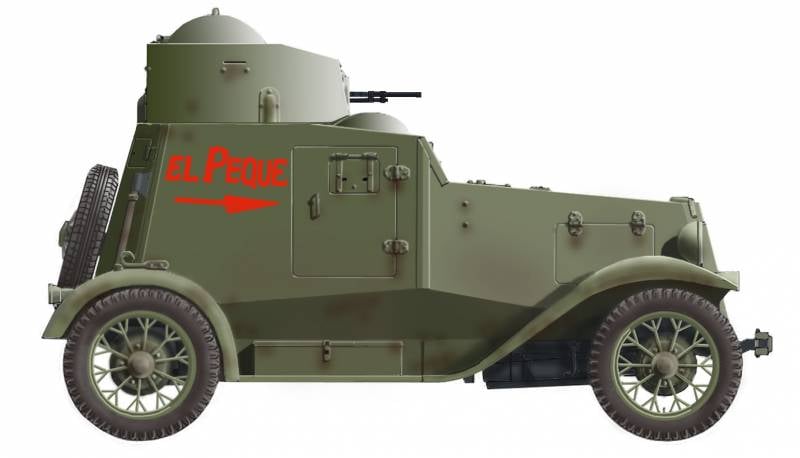
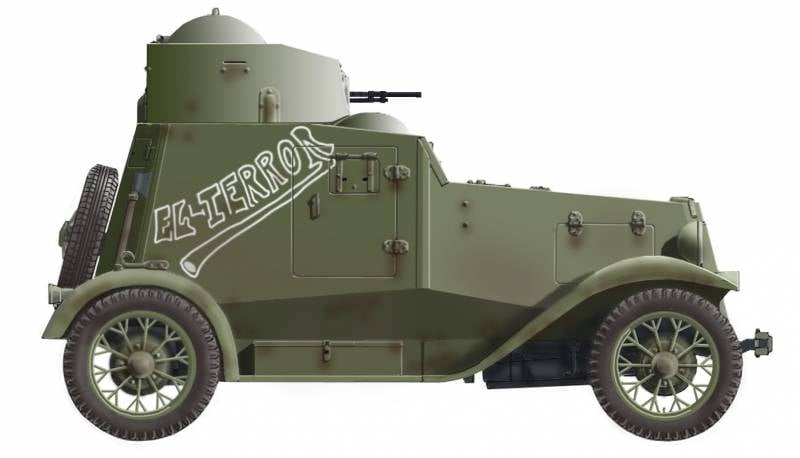
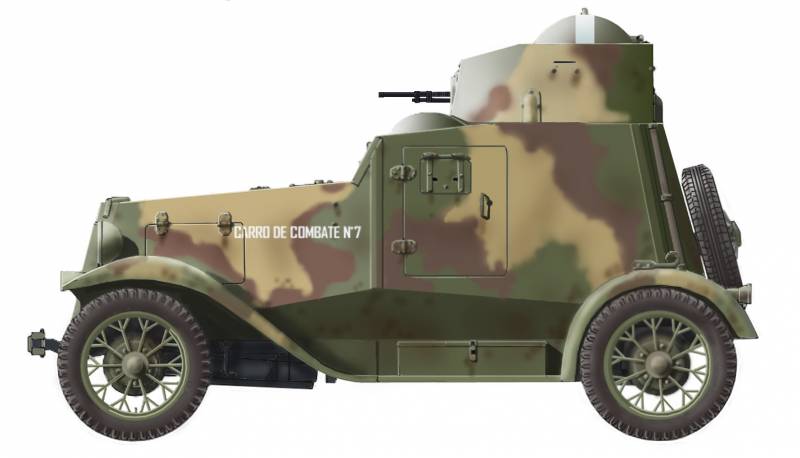
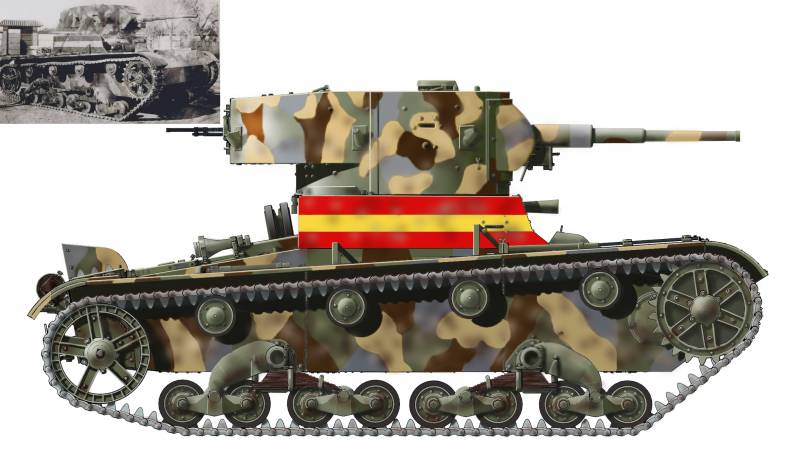
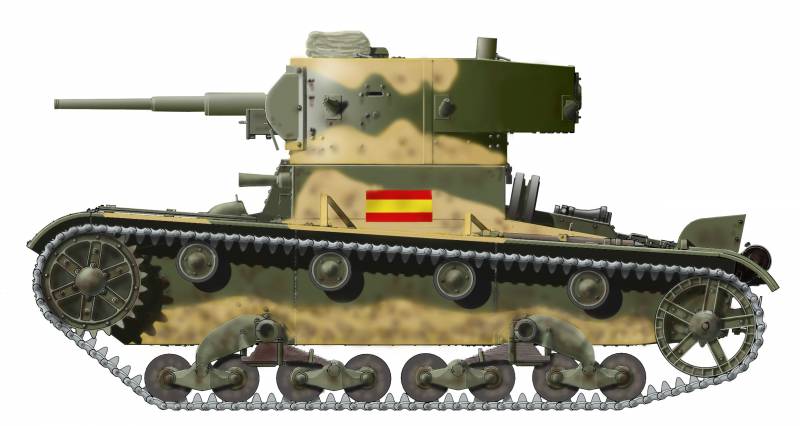
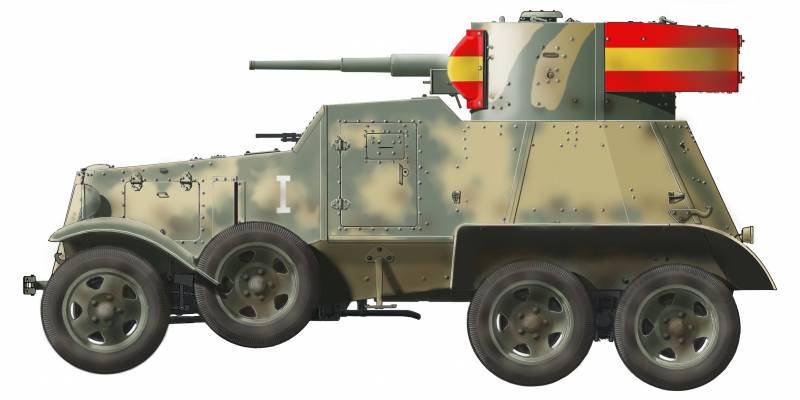
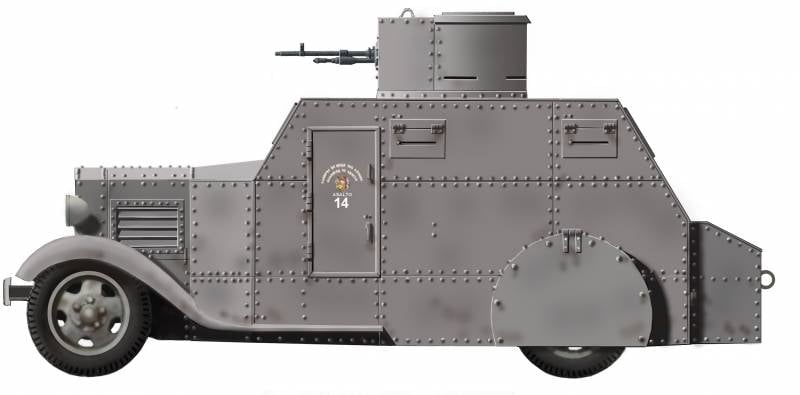
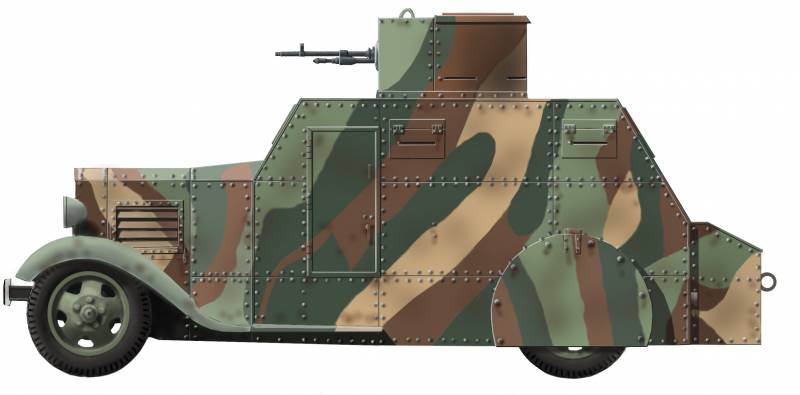
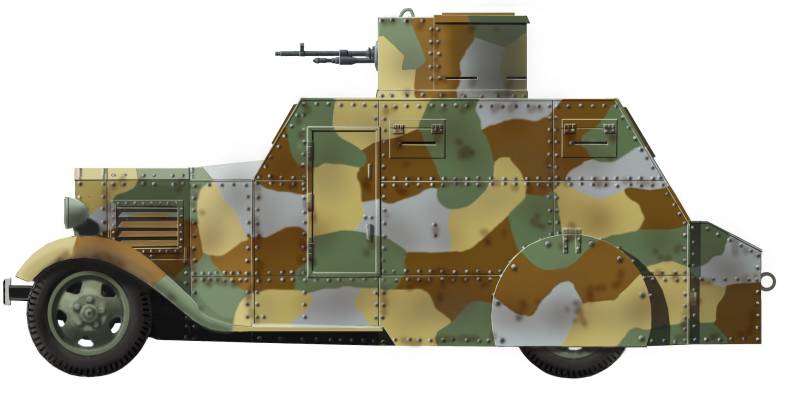
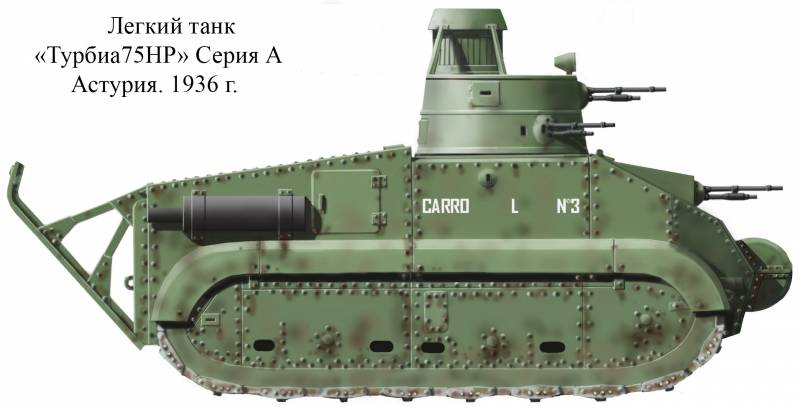
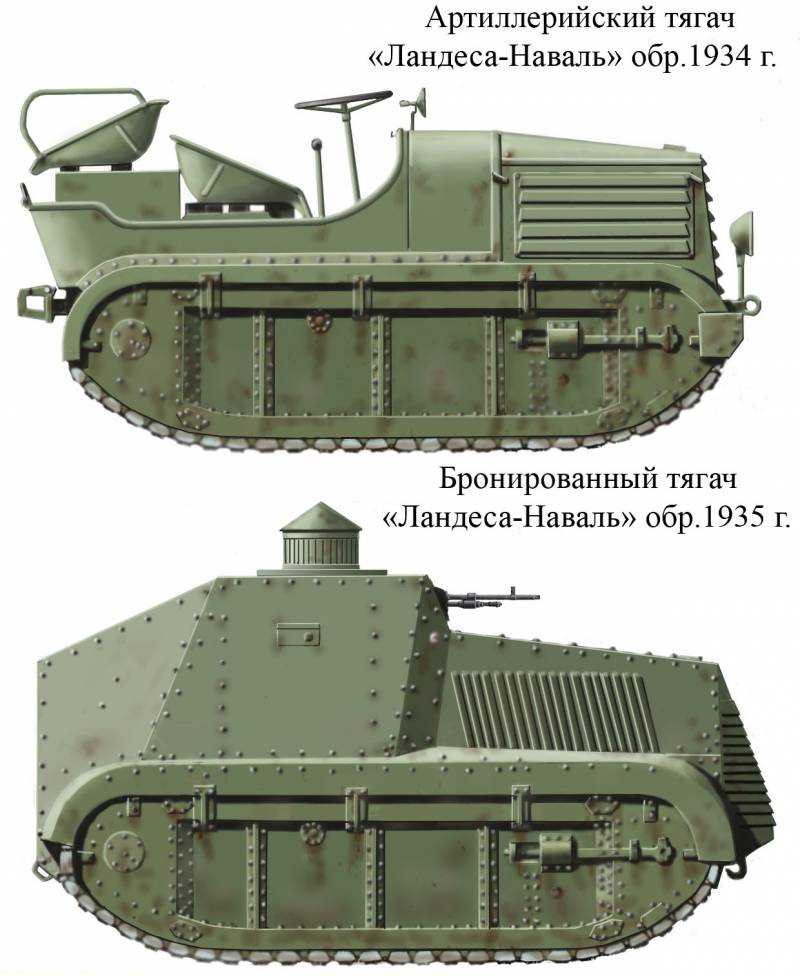
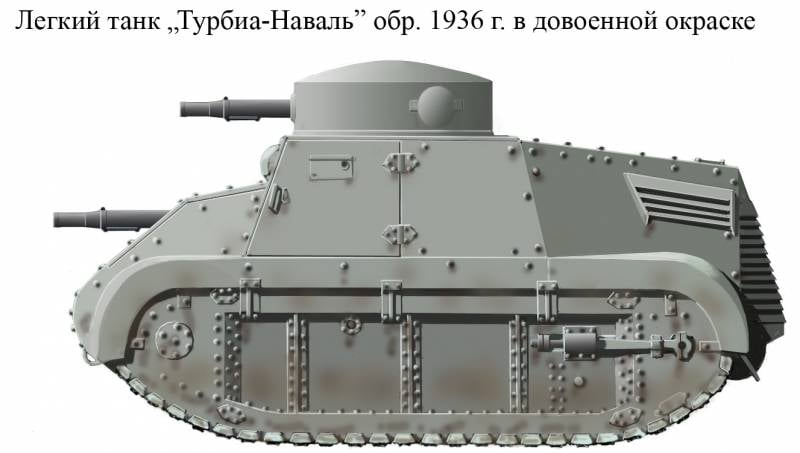
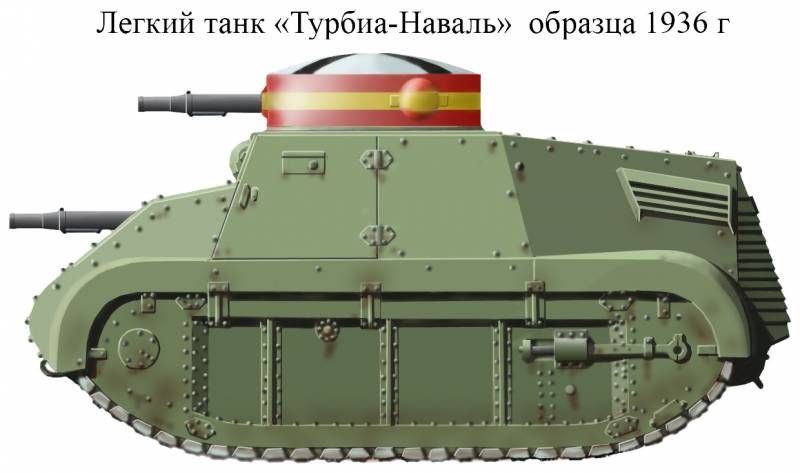
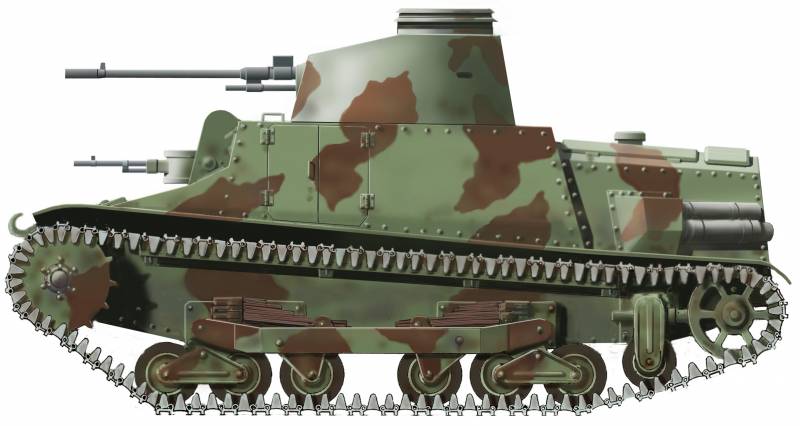
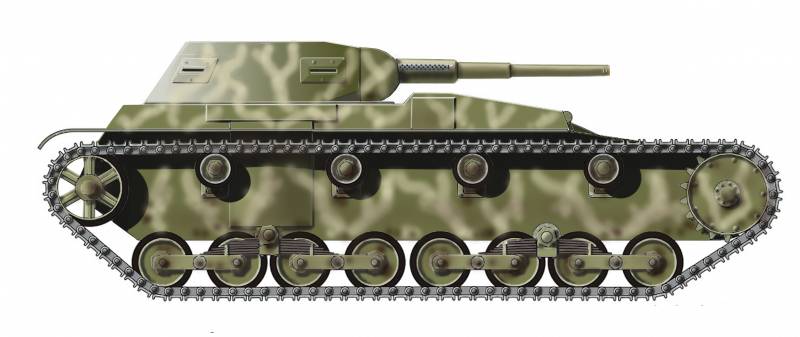
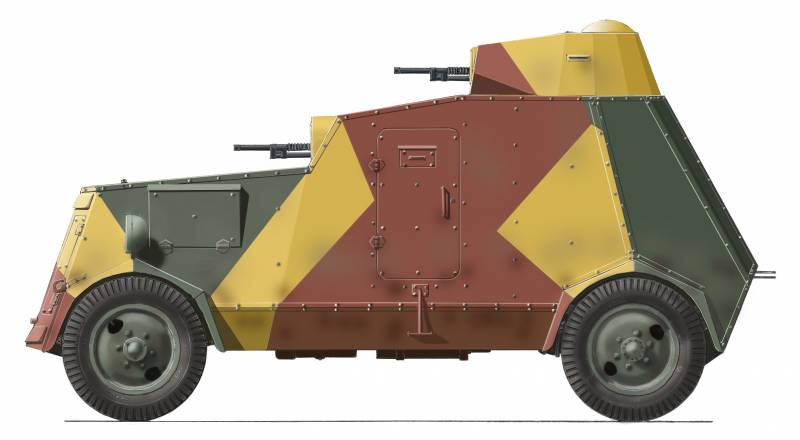
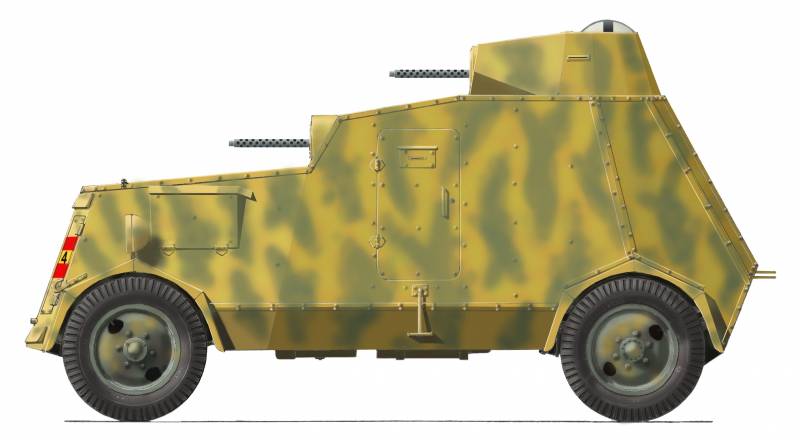
Information